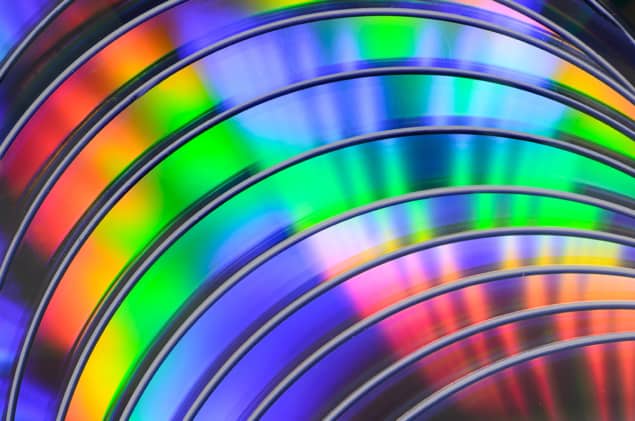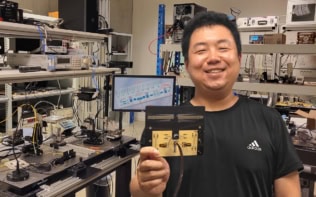
Physicists in the US have shown that light hitting a conductive metal surface at an angle can cause free electrons in the metal to move either in the same direction or in the opposite direction as the photons, depending on its surrounding environment. Jared Strait and a team of researchers at the National Institute for Standards and Technology (NIST) in Maryland observed the direction change through simplified experiments involving a thin gold film. Their observations reveal a significant gap in our knowledge of how light interacts with metals on microscopic scales.
Currently, physical models explain the interactions between light and conductive metals through the framework of classical electrodynamics. In these models of the so-called “photon-drag” effect, the momentum of photons hitting the metal surface at an angle is conserved as it transfers to the material’s free electrons, pushing them forward in the same direction as the incident light. However, many recent experiments have contradicted this idea, observing currents that flow in the opposite direction of the incident light – indicating instead that the photons are pulling electrons backwards.
Strait’s team aimed to recreate these counter-intuitive results in a highly simplified experiment. They placed uniform film of gold, which contains classical Drude-like electrons, inside a vacuum. An electrode at one end of the film then indicated its voltage, and subsequently, the properties of electron flow induced by the photon-drag effect. After hitting the film with polarized light at various different angles, the team observed that the magnitude of the voltages picked up by the electrode were consistent with current theoretical models of the effect. However, they also found that the electrons were flowing in entirely the wrong direction.
The NIST researchers then repeated the experiment with the film exposed to ambient air. This time, they reproduced the electron flow directions predicted by current theories, which confirmed that those theories are not simply based on inconsistent experimental results. It seems instead that the directions of electron currents produced by the photon-drag effect are wholly dependent on the surrounding environment of the metal.
This completely contradicts classical explanations for the effect, and suggest that far more complex behaviours are at play on microscopic scales than previously realized. The physicists suggest that these environment-dependent direction changes could be caused by the incident photons acting not just on free electrons in the metal, but also on the core electrons that remain bound to metal ions. However, they acknowledge that this idea is completely speculative.
The processes underlying their observations remain a mystery for now, but Strait’s team now hope to recreate their results across different metals, as well as different polarizations of incident light. Ultimately, they hope that these efforts will allow them to construct an updated model of momentum transfer in the photon-drag effect, potentially allowing for new microscopic theories of light-metal interactions.
- The full results are reported in Physical Review Letters



